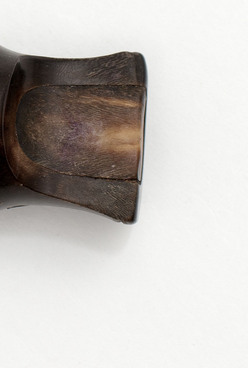The whistle has been an important attribute in the equipment of the participants of polar expeditions for centuries. This is a basic instrument for signaling and scaring off predators. The importance of the whistle cannot be overlooked during snowstorms because one cannot shout over it. Even an experienced polar explorer can get lost and fall behind the group, so the most necessary things, like a flashlight, a knife, a lighter, work gloves and a whistle must always be kept at hand.
Whistles emit a sharp sound because the air blown through the mouthpiece is divided by the edge of the resonator into two streams. The lower stream makes a loop inside the resonator and slices the upper one.
With the development of mechanics, various forms of whistles and horns have appeared, but even in the world where complex digital devices exist, the scope of application for these instruments is still vast.
Signal whistles were used by the Ancient Greeks to set the rhythm for the rowers on the galleys. The British used whistles during the Crusades to cue orders to archers. Boatswain pipes were also used on ships to issue commands and greet authoritative figures. Land forces used the whistle to give out signals to the troops in the formation, and in the tsarist army, the sentry on duty was required to be equipped with one.
According to the international rules for preventing collisions of ships on the high seas, powerful siren-whistles are installed on ships. From the 19th century, whistles were introduced into the field equipment of officers of the Russian Imperial, and then the Red Army. The belts and uniforms of soldiers had special pockets for whistles. The whistle on display was intended to be attached to the clothes on a chain with a carbine.
On military vessels, lower-rank non-commissioned officers of the Russian Imperial Navy had special pipes that could play several tones with which they gave-out orders to the crew.
Whistles are widely used by referees and coaches during sporting events, traffic police inspectors, and P.E. teachers in schools. Galton’s ultrasonic whistle is used by dog handlers for training dogs. Trains use steam or pneumatic whistles.





